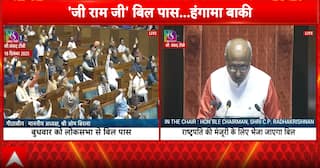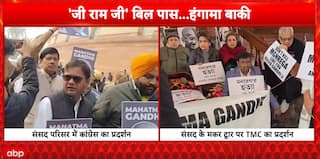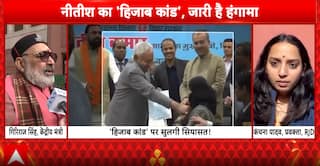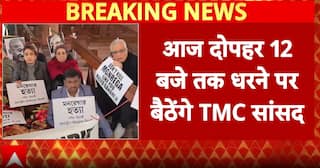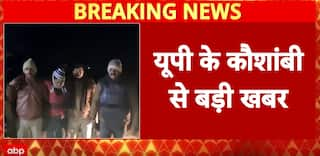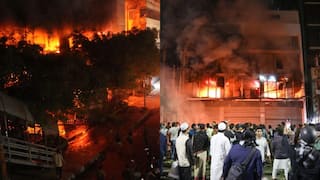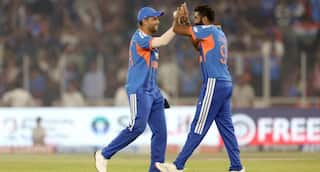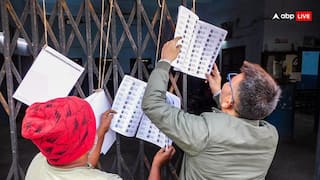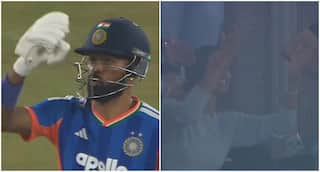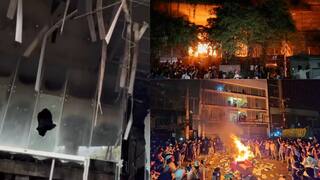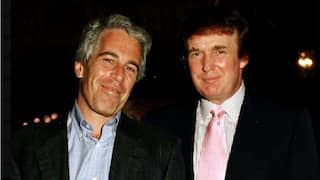Explorer
Budget 2019: From to revenue expenditure to indirect taxes, A to Z of Budget
Year on year, the Union Budget throws up a lot of interesting terms which the citizens of the nation are intrigued to know so as to get a better understanding on the financial outlook and macro-economic parameters of the country.

Piyush Goyal
New Delhi: Piyush Goyal shall be presenting the interim budget for fiscal year 2018-19 on February 1. Jaitley underwent a surgery in the United States of America on Tuesday. With doctors advising him two weeks’ rest, Goyal is set to present the interim Budget — the final Budget of the Modi-led government’s current regime. In wake of the upcoming elections, the budget is expected to have some populist schemes and measures with a view to a lure the voters. Jaitley underwent a surgery in the US on Tuesday. With doctors having advised him two weeks’ rest, Goyal has stepped in as the Interim Finance Minister and is set to present the interim Budget — the final Budget of the Modi-led government’s current tenure, which comes less than 90 days before the Lok Sabha polls and could contain key announcements. The budget for fiscal year 2017-18 would also be the first after the major economic reforms undertaken by the Modi govt in the form of demonetisation and Goods and Services Tax. Year on year, the Union Budget throws up a lot of interesting terms which the citizens of the nation are intrigued to know so as to get a better understanding on the financial outlook and macro-economic parameters of the country. Here is an in-depth glossary of some of the terms and jargons, commonly used in the presentation of the Union Budget, explained in layman's terms. Budget Glossary 1. Receipts/Expenditures a. Capital receipt/Expenditure All receipts and expenditure that liquidate or create an asset would in general fall under capital account. For instance, if the government sells shares (disinvests) in public sector companies, like it did in the case of Maruti, it is in effect selling an asset. The receipts from the sale would go under capital account. b. Revenue receipt/Expenditure All receipts and expenditure that in general do not entail sale or creation of assets are included under the revenue account. On the receipts side, taxes would be the most important revenue receipt. On the expenditure side, anything that does not result in creation of assets is treated as revenue expenditure. Salaries, subsidies and interest payments are good examples of revenue expenditure. c. Plan expenditure: This is essentially the budget support to the central plan and the central assistance to state and union territory plans. Like all budget heads, this is also split into revenue and capital components. d. Non-plan expenditure: This is largely the revenue expenditure of the government. The biggest items of expenditure are interest payments, subsidies, salaries, defence and pension. 3. Taxes a. Direct Tax- These are the taxes where the burden of tax falls on the person on whom it is levied. A direct tax is paid directly by an individual or organization to an imposing entity. A taxpayer, for example, pays direct taxes to the government for different purposes, including real property tax, personal property tax, income tax or taxes on assets. b. Indirect taxes - In case of indirect taxes, the incidence of tax is usually not on the person who pays the tax. These are largely taxes on expenditure and include Customs, excise and service tax. c. Non-tax revenue The most important receipts under this head are interest payments (received on loans given by the government to states, railways and others) and dividends and profits received from public sector companies. Various services provided by the government - police and defence, social and community services such as medical services, and economic services such as power and railways - also yield revenue for the government. d. Corporation Tax: Tax on profits of companies. e. Taxes on Income other than corporation tax: Income tax paid by non-corporate assesses, individuals, for instance. f. Service Tax: It is a tax on services rendered. Telephone bill, for instance, attracts a service tax. g. Fringe benefit tax (FBT): The taxation of perquisites - or fringe benefits - provided by an employer to his employees, in addition to the cash salary or wages paid, is fringe benefit tax. It was introduced in Budget 2005-06. The government felt many companies were disguising perquisites such as club facilities as ordinary business expenses, which escaped taxation altogether. Employers have to now pay FBT on a percentage of the expense incurred on such perquisites. h. Securities transaction tax (STT): Sale of any asset (shares, property) results in loss or profit. Depending on the time the asset is held, such profits and losses are categorised as long-term or short-term capital gain/loss. In Budget 2004-05, the government abolished long-term capital gains tax on shares (tax on profits made on sale of shares held for more than a year) and replaced it with STT. i Customs: Taxes imposed on imports. While revenue is an important consideration, Customs duties may also be levied to protect the domestic industry or sector (agriculture, for one), in retaliation against measures by other countries. 3. Deficit: a. Revenue Deficit The excess of disbursements over receipts on revenue account is called revenue deficit. This is an important control indicator. All expenditure on revenue account should ideally be met from receipts on revenue account; the revenue deficit should be zero. b. Fiscal Deficit: When the government's non-borrowed receipts fall short of its entire expenditure, it has to borrow money from the public to meet the shortfall. The excess of total expenditure over total non-borrowed receipts is called the fiscal deficit. c. Primary deficit: The revenue expenditure includes interest payments on government's earlier borrowings. The primary deficit is the fiscal deficit less interest payments. A shrinking primary deficit indicates progress towards fiscal health. The Budget document also mentions deficit as a percentage of GDP. d. Current Account Deficit: It is a trade measure that shows the value of a country’s imports of goods and services to be higher than the value of its exports.4. Inflation: a. Wholesale Price Index (WPI) - It is a measure of inflation, or price change, arrived at after regularly measuring the prices of a slew of wholesale goods. b. Consumer Price Index (CPI) - It is a measure of inflation, or price change, arrived at after regularly measuring the prices of a slew of household goods and services. 5. Other Major Terms: a. Purchasing power parity: Purchasing power parity PPPs are the rates of currency conversion which equalise the purchasing power of different currencies. This means that a given sum of money, when converted into different currencies at the PPP rates, will buy the same basket of goods and services in all countries. b. Annual Financial Statement: Article 112 of the Constitution requires the government to present to Parliament a statement of estimated receipts and expenditure in respect of every financial year - April 1 to March 31. This statement is the annual financial statement. The annual financial statement is usually a white 10-page document. It is divided into three parts, consolidated fund, contingency fund and public account. c. Contingency Fund Any urgent or unforeseen expenditure is met from the Contingency Fund fund. The Rs 500-crore fund is at the disposal of the President. Any expenditure incurred from this fund requires a subsequent approval from Parliament and the amount withdrawn is returned to the fund from the consolidated fund.
Follow Business News on ABP Live for more latest stories and trending topics. Watch breaking news and top headlines online on ABP News LIVE TV
Read more

Sayantan Ghosh
Opinion










